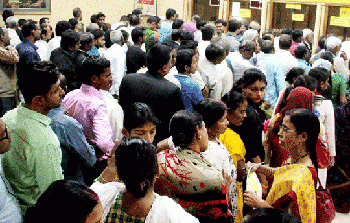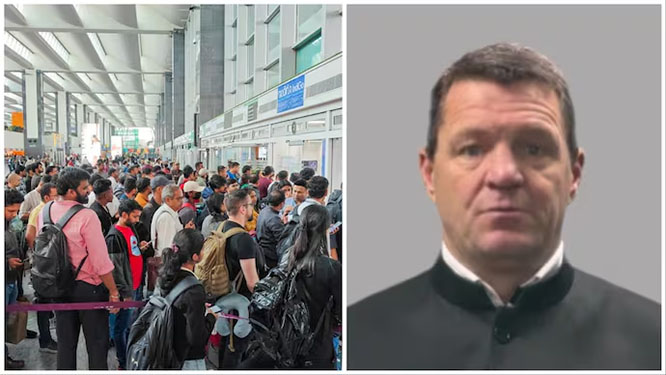New Delhi, Dec 1: With Thursday being the pay day, banks are gearing up to face a huge rush as people will queue up at branches across the country to withdraw salaries amid the ongoing cash crunch following demonetisation.

Top government officials say special efforts are being made to pump in additional cash into banks to meet the heavy demand for currency notes on account of salary withdrawal.
The Reserve Bank has been asked to ensure adequate supply of new Rs 500 notes at banks and currency printing presses are working overtime to print them, the official said, adding that there is a lag of 21 days for printed notes to reach markets.
Bankers fear heavy rush at the branches for a week as many ATMs are still not functional.
Banks may have to lower the withdrawal limit as there is limited cash coming from RBI, said an official from UCO Bank.
People are likely to throng at bank branches on December 1 as central and state governments credit salaries and pensions to millions of accounts. At the central level alone, there are around 50 lakh employees and 58 lakh pensioners.
Bankers said the government's move last week to provide Rs 10,000 in advance to non-gazetted staff may provide only a slight relief.
Many banks have made 'SOS calls' to the Reserve Bank for additional cash for the first few days of December to meet the initial rush of people, already fatigued standing in unending queues to exchange/deposit old notes and make limited withdrawals over the past three weeks after the demonetisation was announced on November 8.
Banks have to make additional arrangement including security deployment, said a senior banker of Canara Bank.
Many banks are contemplating to set up additional counters for withdrawal to meet the rush.
"At SBI we have enough currency supply. At some pockets there was shortage, but there also funds are being made available," State Bank of India's deputy managing director Manju Agarwal said.
Despite recalibration of nearly 70 per cent of ATMs do not have cash, while people are struggling with the problem of change as the operational ones dispense mostly high denomination Rs 2,000 notes.
Nearly 23 days after Prime Minister Narendra Modi
announced the cancellation of legal tender of old Rs 500/1000 currency notes, small traders, truckers and construction workers are facing hardships in going about their business.
Due to the sowing of rabi crop, government's focus has now shifted to rural areas, which means urban centres are feeling the cash squeeze, said some bankers.
Funds are being made available in rural and semi-urban pockets so that farmers get adequate cash for sowing rabi crop, they said.
There are also reports that banks in major metros are getting less than their cash requirement leading to chaos at the branches.
RBI Governor Urjit Patel had earlier said that the central bank is monitoring the situation on a daily basis and taking all necessary actions to "ease the genuine pain of citizens" with a clear intent to normalise the things as early as possible.
"We have made adequate arrangements to meet the higher demand for cash as salaries would be credited into customer accounts (as the month turns). In our bank there would be no shortage of cash," Central Bank of India Executive Director R C Lodha said.
Dismissing rumours of rationing of cash, SBI's Agarwal said there would not be any such thing and customers would be allowed to withdraw as per the limit available.
A customer is allowed to withdraw up to Rs 24,000 per week from their account. However, there were instances of banks not allowing such high withdrawals due to the paucity of cash supply.
Agarwal said she expects queues to be shorter now as banks are not exchanging scrapped old currency notes and also as people who wanted to have deposit demonetised notes would have done by now.







Comments
Add new comment